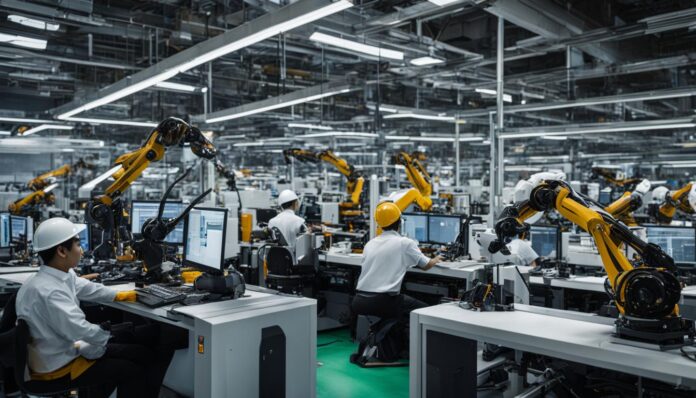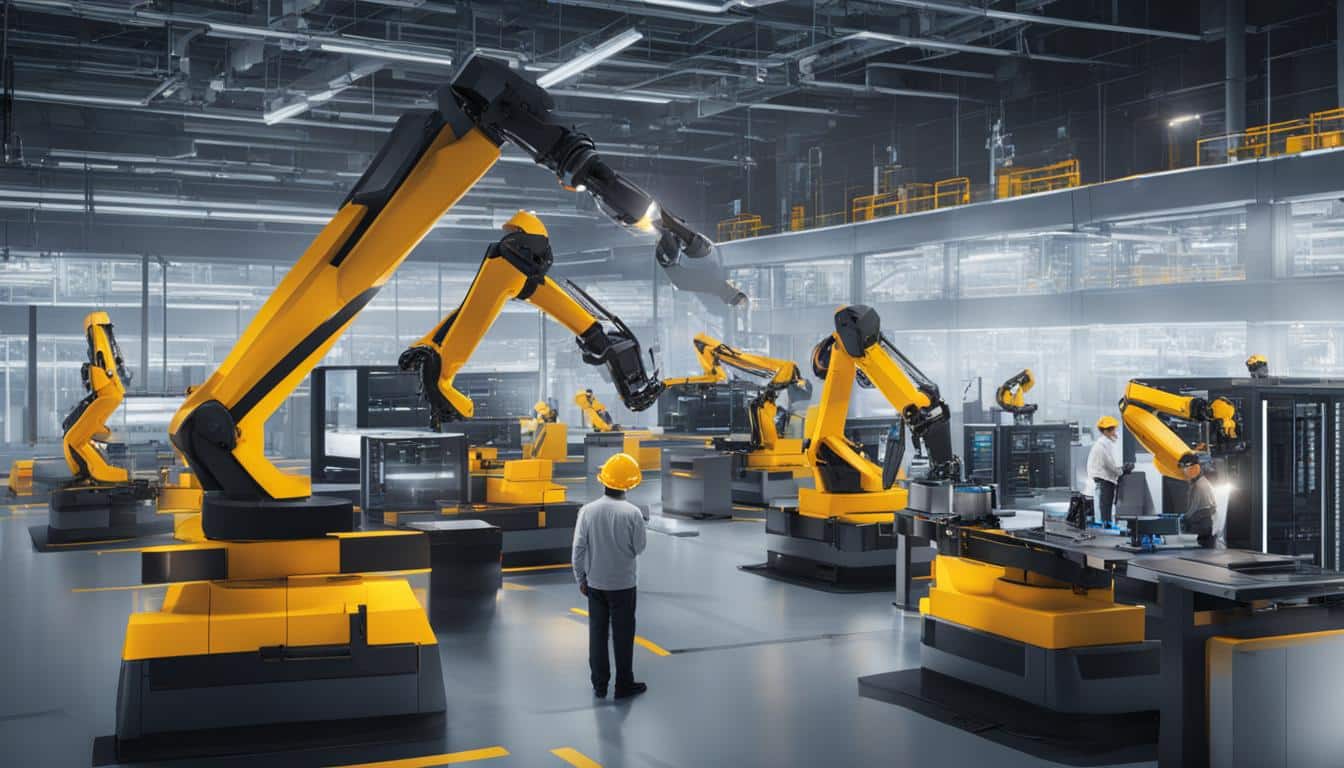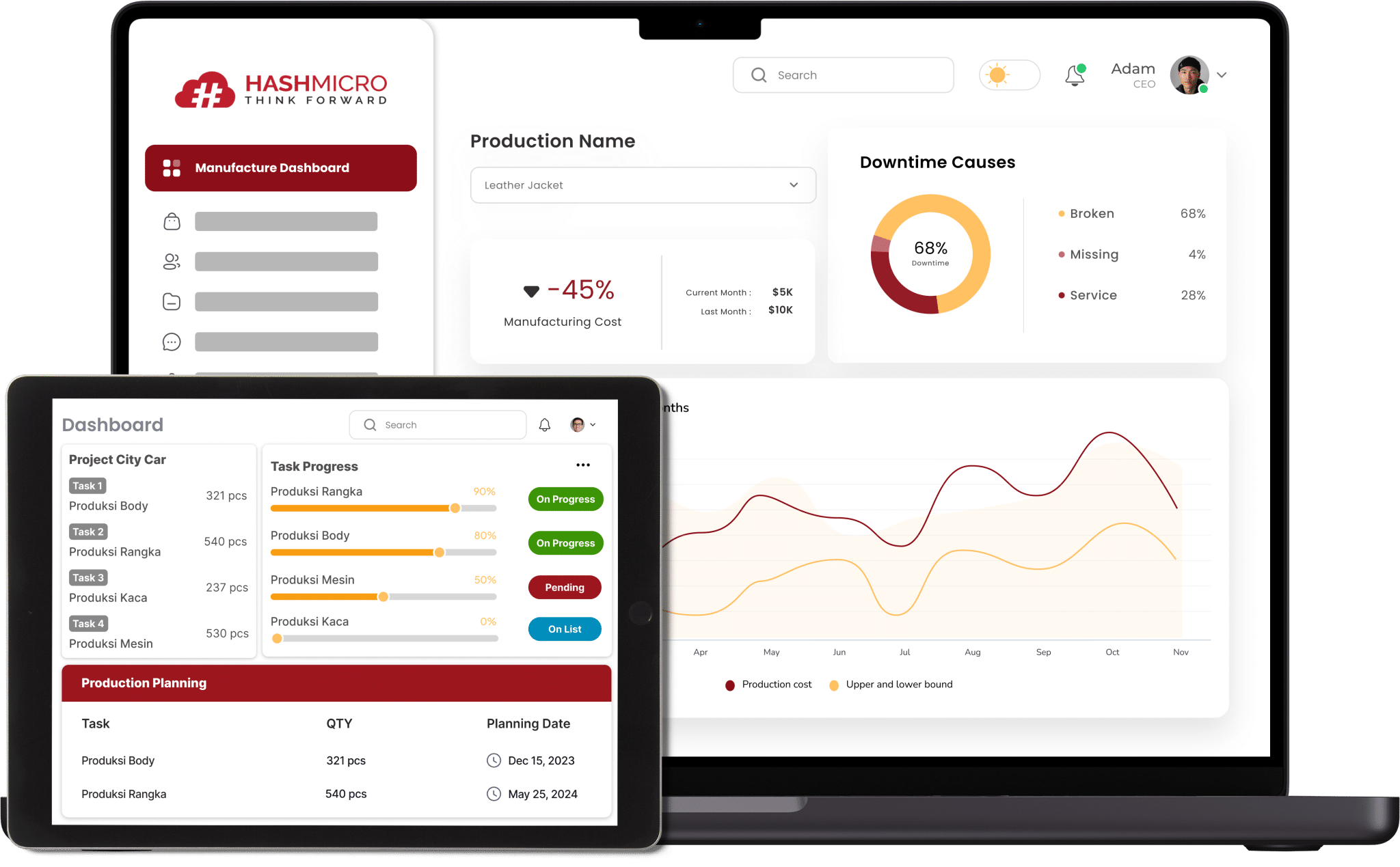As the global landscape evolves, Singapore’s industry is embracing the convergence of technology and business processes to drive efficiency and productivity. In this article, we will explore the current workforce automation trends in Singapore, the benefits of ERP integration, and the impact of these technologies on Singapore’s job market.
Automation technology is rapidly transforming industries around the world, and Singapore is no exception. From manufacturing and logistics to healthcare and finance, organizations are adopting automation solutions to streamline operations and improve productivity. By integrating automation with ERP systems, businesses can achieve a holistic approach to managing their processes, data, and resources.
Best ERP software in Singapore business integration plays a crucial role in automation as it serves as the backbone for data integration and process management. With ERP systems, companies can centralize their operations, consolidate data, and gain real-time insights into their business performance. This seamless integration enables organizations to make informed decisions, optimize resources, and respond quickly to market demands.
Key Takeaways
|
Table of Content:
Table of Content
Understanding Workforce Automation and Robotics: Overview of Automation in the Global and Singaporean Context
In this section, we will provide an overview of workforce automation and robotics, discussing their significance both in the global context and specifically in Singapore. We will delve into the history of automation and robotics, highlighting key milestones and advancements that have shaped the industry.
History of Automation and Robotics
Automation and robotics have revolutionized industries across the globe, driving efficiency, productivity, and innovation. The roots of automation can be traced back to the Industrial Revolution, when automated machinery began to replace manual labor in manufacturing processes.
Over time, automation technologies have advanced exponentially, with significant breakthroughs occurring in the mid-20th century. The introduction of programmable logic controllers (PLCs) and computer numerical control (CNC) systems marked a turning point in automation, enabling precise control and coordination of industrial processes.
Robotic technology, on the other hand, emerged in the mid-20th century as well, with the development of the first industrial robot by George Devol in 1954. These early robots paved the way for further advancements in automation, with robotics finding applications in a wide range of industries, from manufacturing to healthcare to logistics.
Today, automation and robotics have become integral to global industries, reshaping the way work is done and offering solutions to complex challenges. Singapore is no exception, as the country strives to establish itself as a leading hub for innovation and technology.
In the Singaporean context, efforts to embrace automation and robotics are driven by the nation’s vision of becoming a smart nation. The Singaporean government has been proactive in promoting digitalization and automation, investing in research and development, and providing support to businesses to adopt innovative technologies.
Furthermore, Singaporean industries such as manufacturing, logistics, and healthcare have recognized the potential of automation and robotics in improving operational efficiency, quality control, and overall productivity. With a highly skilled workforce automation and a business-friendly environment, Singapore is poised to reap the benefits of automation in driving future economic growth.
As we explore the current state of automation and robotics, we will discuss their applications and impact across various industries. By understanding the evolution and current state of these technologies, readers will gain insights into the tremendous potential they hold for Singapore’s workforce.
ERP Systems: The Backbone of Automation
In the world of automation, ERP systems play a crucial role in driving efficiency and streamlining business processes. But what exactly are ERP systems and how do they work? In this section, we will provide a comprehensive introduction to ERP systems and explore their relevance in the context of automation.
What is ERP and How Does it Work?
ERP, or Enterprise Resource Planning, refers to a suite of integrated software applications that help organizations manage and automate various aspects of their day-to-day operations. ERP systems serve as a central hub for data, allowing different departments to share information seamlessly and collaborate effectively. By integrating various business functions such as finance, sales, inventory, and human resources, ERP systems provide a comprehensive view of the organization’s operations.
The beauty of ERP systems lies in their ability to automate repetitive tasks, streamline workflows, and improve operational efficiency. They achieve this by consolidating data from different sources, automating key processes, and providing real-time visibility into business performance. ERP systems typically include modules for finance, supply chain management, customer relationship management, project management, and more, offering a holistic solution for managing the entire organization.
Furthermore, ERP systems play a critical role in the context of automation by acting as the backbone that connects various automated processes. They ensure seamless integration and communication between different automated systems, allowing data to flow freely and enabling end-to-end automation. Whether it’s managing inventory levels, automating production planning, or optimizing resource allocation, ERP systems provide the necessary foundation for automation initiatives to thrive.
Impact of Automation and ERP on Singapore’s Job Market
Integrating automation and ERP systems into Singapore’s workforce has significant implications for the job market. These technologies bring both opportunities and challenges, affecting productivity, job creation, and job displacement. By understanding the impact of automation and ERP on Singapore’s job market, businesses and workers can navigate these changes effectively.
Enhanced Productivity and Efficiency: Automation and ERP systems contribute to increased productivity and efficiency by streamlining workflows, automating repetitive tasks, and providing real-time data insights. This allows businesses to optimize their operations, reduce manual errors, and allocate resources more effectively. As a result, productivity levels can soar, creating new job opportunities and driving economic growth in Singapore.
New Job Opportunities: With the integration of automation and ERP systems, new job roles are emerging within the workforce. These positions include automation specialists, data analysts, and ERP consultants, among others. Additionally, as businesses expand their technological capabilities, there is a growing need for skilled workers who can adapt to and operate these advanced systems. This creates opportunities for individuals to upskill or reskill to meet the demands of the evolving job market.
Addressing Job Displacement Concerns: While automation and ERP systems can enhance productivity, there are concerns about potential job displacement. Some jobs that involve repetitive, routine tasks may be automated, leading to a shift in job requirements and skill demands. However, it is essential to note that automation does not necessarily mean complete job loss. Instead, it usually leads to job transformation, where workers can focus on higher-value tasks that require critical thinking, creativity, and problem-solving skills. By reskilling and upskilling the workforce, companies can ensure a smoother transition and minimize the impact of job displacement.
By examining the impact of automation and ERP systems on Singapore’s job market, we can better understand the opportunities and challenges these technologies bring. Businesses can leverage automation to enhance productivity and create new job roles, while individuals can prepare for the evolving workforce through upskilling and reskilling programs. As Singapore continues to embrace automation and ERP integration, it is crucial to strike a balance between human talent and technological advancements, ensuring a prosperous and sustainable future for the job market.
The Best Workforce Automation and ERP System in Singapore: HashMicro
HashMicro stands out as the beacon of excellence in Singapore. Its Enterprise Resource Planning (ERP) System has been hailed as the best in the country, and it takes great pride in providing businesses with the tools they need to thrive.
HashMicro offers several customizable modules that can automate your business complex process. In this article, we’ll explore the key modules of HashMicro’s ERP System, highlighting their comprehensive functionalities.
Accounting
Efficient financial management is the bedrock of any successful enterprise. HashMicro’s ERP System boasts a robust Accounting module that simplifies complex financial processes. From automating transactions to generating accurate financial reports, our system ensures that you have complete control over your company’s finances. Stay compliant with local regulations and make informed decisions with real-time financial insights.
Inventory
Maintaining optimal inventory levels is vital for smooth operations. Our Inventory module provides end-to-end control over your stock. You can monitor stock levels, track item movement, and even set automatic reorder points. This not only minimizes stockouts and overstock situations but also enhances your overall supply chain efficiency.
Procurement
Streamline your procurement processes with HashMicro’s ERP System. Our Procurement module enables you to manage vendor relationships, track purchase orders, and automate procurement workflows. With better control over your procurement cycle, you can negotiate better deals, reduce costs, and ensure on-time deliveries.
Supply Chain
Efficiency in the supply chain is essential to meeting customer demands and staying competitive. HashMicro’s ERP System includes a Supply Chain module that allows you to optimize your supply chain processes. From demand forecasting to order fulfillment, our system helps you minimize lead times, reduce wastage, and enhance overall supply chain visibility.
Warehouse
Effective warehouse management is crucial for inventory control and order fulfillment. Our Warehouse module helps you manage every aspect of your warehouse operations. From bin tracking to order picking and packing, you can improve accuracy and efficiency, resulting in faster order processing and happier customers.
CRM (Customer Relationship Management)
Nurture customer relationships with HashMicro’s CRM module. Keep track of customer interactions, manage leads, and provide personalized services. This module empowers you to deliver exceptional customer experiences, foster loyalty, and drive growth through enhanced customer engagement.
Human Resources
Your employees are your most valuable assets, and HashMicro’s ERP System includes a Human Resources module to help you manage them effectively. From payroll processing to leave management and performance evaluations, our system streamlines HR operations, ensuring that your workforce remains motivated and productive.
In conclusion, HashMicro’s ERP System is not just a software solution; it’s a strategic tool that empowers businesses to excel in the competitive landscape of Singapore. Its comprehensive modules cover every facet of your operations, from accounting to human resources, allowing you to streamline processes, reduce costs, and make informed decisions.
With HashMicro, you’re not just getting an ERP system; you’re getting a partner committed to your success. Experience excellence with HashMicro and propel your business to new heights. Download the price scheme below!
Case Studies: Success Stories of Automation and ERP Integration
In this section, we will showcase real-life case studies of successful automation and ERP integration in Singaporean companies. These success stories highlight how businesses across various industries have leveraged automation and ERP systems to streamline operations, improve efficiency, and achieve significant cost savings.
One such case study involves XYZ Manufacturing, a leading industrial equipment manufacturer in Singapore. Facing complex production processes and inefficient inventory management, XYZ Manufacturing implemented an integrated automation and ERP solution. By automating their production lines and integrating their supply chain management with the ERP system, XYZ Manufacturing achieved a 30% reduction in production costs and a 50% improvement in delivery time.
“Integrating automation and ERP systems has transformed our business operations. We now have real-time visibility into our production processes and inventory levels, allowing us to make data-driven decisions and optimize resource allocation. The automation of repetitive tasks has freed up our employees’ time, enabling them to focus on more strategic activities. We are thrilled with the results and the positive impact it has had on our bottom line.” – John Tan, CEO of XYZ Manufacturing
Another success story is ABC Retail, a well-known fashion retailer in Singapore. Struggling with inventory discrepancies, outdated manual processes, and poor customer experience, ABC Retail implemented an end-to-end automation and ERP solution. By automating their inventory management, order fulfillment, and customer relationship management, ABC Retail achieved a 20% improvement in inventory accuracy, a 40% reduction in manual data entry errors, and a significant increase in customer satisfaction.
These case studies demonstrate the tangible benefits of automation and ERP integration for Singapore companies. By leveraging technology to optimize processes, companies can unlock new levels of efficiency, productivity, and cost savings. Whether in manufacturing, retail, or other industries, automation and ERP integration have proven to be game-changers.
By examining these success stories, you can gain valuable insights, inspiration, and ideas for implementing automation and ERP integration in your own company. The next section will focus on strategies that companies can employ to successfully adapt to automation and ERP integration, providing you with practical tips and best practices.
Strategies for Companies Adapting to Automation and ERP
In order to successfully adapt to automation and ERP integration, companies need to carefully plan and implement strategies that address the key considerations involved. By following practical tips and best practices, organizations can navigate the challenges and maximize the benefits of automation and ERP integration.
- Change Management: Implementing automation and ERP systems often requires significant changes to existing processes and workflows. Companies should establish a change management plan that includes clear communication, stakeholder engagement, and training programs. By getting buy-in from employees and providing them with the necessary support, companies can ensure a smooth transition.
- Staff Training: Properly training employees on the new automation and ERP systems is crucial for successful adoption. Companies should invest in comprehensive training programs that not only teach employees how to use the technology, but also educate them on the benefits and goals of automation and ERP integration. This will help employees embrace the change and leverage the systems effectively.
- Infrastructure Requirements: Before implementing automation and ERP systems, companies need to assess their infrastructure requirements. This includes evaluating their hardware and software capabilities, as well as determining if any upgrades or modifications are necessary. Ensuring that the infrastructure can support the new systems is essential for their smooth operation.
- Data Migration: Companies must plan for the migration of data from legacy systems to the new automation and ERP systems. This process requires careful consideration to ensure that data is transferred accurately and securely. It may involve data cleansing, mapping, and validation to ensure the integrity and reliability of the information in the new systems.
- Continuous Improvement: Automation and ERP integration is an ongoing process that requires continuous improvement. Companies should establish mechanisms to gather feedback from employees and stakeholders, allowing them to identify areas for improvement and address any issues that arise. Regularly updating and optimizing the systems will help companies stay competitive and maximize their return on investment.
By implementing these strategies, companies can effectively adapt to automation and ERP integration, positioning themselves for increased efficiency, productivity, and competitiveness in Singapore’s workforce.
Balancing Human Talent with Technological Advancements
In today’s rapidly evolving era of automation, it is essential for companies to strike a delicate balance between human talent and technological advancements. While automation and technological solutions offer numerous benefits, it is crucial to recognize the unique value that human skills bring to the workforce. By leveraging automation and ERP systems effectively, businesses can harness the power of technology to enhance human capabilities and drive success.
Automation can streamline repetitive and mundane tasks, freeing up valuable time for employees to focus on more strategic and creative endeavors. By automating routine processes, employees can redirect their energy towards problem-solving, innovation, and customer service, ultimately leading to improved productivity and customer satisfaction.
However, it is important to address concerns surrounding job displacement that may arise due to automation. Companies must prioritize upskilling and reskilling programs to ensure a smooth transition for employees. By investing in training initiatives, businesses can empower their workforce to adapt and thrive in an automated environment.
As technology continues to advance, the need for human skills such as critical thinking, empathy, and creativity becomes even more valuable. While automation can optimize processes and increase efficiency, it is the combination of human talent and technological advancements that drives true innovation and success.
By fostering a culture of continuous learning and professional development, companies can equip their employees with the necessary skills to thrive in an automated workplace. Training programs focused on emerging technologies and digital literacy enhance employee adaptability and ensure that they remain competitive in the ever-changing job market.
Moreover, recognizing the symbiotic relationship between humans and technology is paramount. Automation and ERP systems should be viewed as tools that augment human capabilities rather than replace them. This perspective allows companies to harness the full potential of their workforce, creating a harmonious blend of human talent and technological advancements.
As Singapore’s industries continue to navigate the age of automation, finding the right balance between human talent and technological advancements will be key to sustainable growth and success. By embracing automation and leveraging ERP systems effectively, companies can optimize their workforce, drive innovation, and stay ahead in an increasingly competitive business landscape.
The Future of Work: Predictions for Automation and ERP Trends
In this section, we will explore the future of work and make predictions for automation and ERP trends. As technology continues to advance at a rapid pace, it is important to stay up-to-date with the latest trends and developments to remain competitive in the evolving workforce.
Emerging technologies such as artificial intelligence, machine learning, and the Internet of Things are reshaping industries and transforming the way we work. These technologies have the potential to automate mundane tasks, improve efficiency, and enhance decision-making processes.
Artificial intelligence (AI) is increasingly being integrated into various systems and processes, enabling intelligent automation and providing predictive analytics. AI-powered chatbots and virtual assistant are becoming more sophisticated, streamlining customer interactions and enhancing user experiences.
Machine learning algorithms are enabling systems to learn from vast amounts of data, making predictions, and continuously improving their performance. This has significant implications for areas such as demand forecasting, supply chain management, and predictive maintenance.
The Internet of Things (IoT) is connecting devices and machines, creating a network of interconnected systems that can communicate and share data. This connectivity allows for real-time monitoring and control, leading to increased automation and efficiency in various sectors, including manufacturing, logistics, and healthcare.
In addition to these emerging technologies, there are also anticipated advancements in ERP systems. Cloud-based solutions are becoming increasingly popular, offering scalability, flexibility, and cost-effectiveness. Companies can leverage cloud-based ERP applications to access real-time data, improve collaboration, and streamline processes across multiple locations.
Real-time analytics is another area that is expected to evolve in the future. With the ability to process and analyze data in real time, companies can make informed decisions and respond quickly to changing market conditions. This empowers businesses to be more agile, proactive, and customer-centric.
As the future of work unfolds, it is clear that automation and ERP integration will continue to play a vital role in driving productivity and innovation. By staying informed about the latest trends and advancements in these areas, companies can position themselves for success in the ever-changing business landscape.
Conclusion
In conclusion, integrating automation and ERP systems is essential for Singaporean companies looking to stay ahead in today’s smart and efficient economy. By embracing these technologies, businesses can drive efficiency, enhance productivity, and tap into new opportunities.
Throughout this article, we explored the history of automation and its current state in Singapore. We also discussed the crucial role of ERP systems as the backbone of automation, streamlining business processes and facilitating data integration.
While the integration of automation and ERP systems brings both benefits and challenges, companies can mitigate the risks by adopting effective strategies. Change management, staff training, and infrastructure considerations are key factors to ensure a successful implementation.
When it comes to optimizing your operations and harnessing the power of automation, the HashMicro ERP system is a reliable and comprehensive solution. With its advanced features such as real-time analytics, cloud-based solutions, and seamless integration, HashMicro ERP empowers businesses to streamline processes, boost productivity, and drive growth. Try the free demo now!




























































